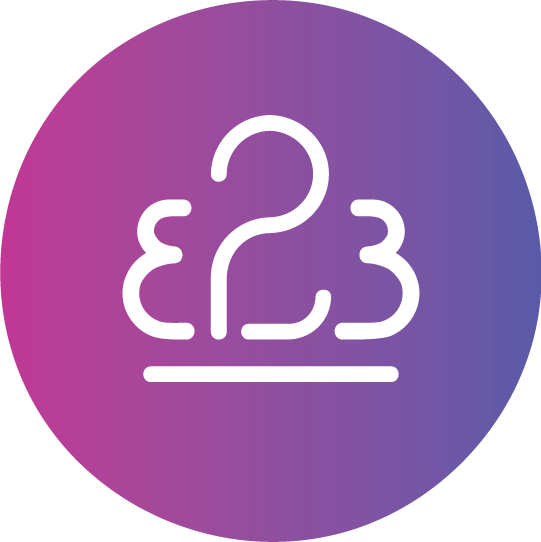The magic of tenderness in coaching
I must admit that I stopped for a moment when Mia asked me to write a text for June’s issue of the magazine that has as a topic ‘Age of Tenderness’. As someone who is actively involved in coaching, she suggested I should connect these two concepts – tenderness and coaching. I can tell you with certainty that this is the first time I have thought about coaching in this way. How do these two concepts intertwine? What is the connection between tenderness and coaching? Where can it be seen in coaching?
The word tenderness may have a different meaning for each of us. Usually our first association is a relationship between a mother and a child, as well as the one between two people who are in love. Some of the terms that can be considered as synonymous are: care, warmth, sensitivity, softness, compassion, fragility … and they can certainly be used in different contexts and are also interchangeable.
I wonder if tenderness is a basic emotion?
Opinions are divided. In the list of basic emotions, apart from tenderness, the list includes joy, sadness, anger and fear. Nonetheless, I guess you will all agree, we most often associate the term tenderness with love.
And what about coaching, what is coaching?
The most important definition of coaching is that it is a partnership between a client and a coach, in which through a creative process the client is inspired to realize maximum personal and professional potential.
One of the key features a coach must show and have is alignment. As a coach, my first task is to align with the client at the very beginning of the session, in order to exchange energies. As we all know, energy is all around us, constantly flowing and sometimes even cannot be controlled. Also key to a great coaching session is building trust. Trust is fragile. Trust is tender. It takes a lot of investment, time and dedication to build it, but it can unfortunately be lost in a split-second. Some say, “Trust is like a mirror. If it breaks, you can fix it, but you’ll see a crack in the glow”. That is the moment when the coach’s ability to create a safe and supportive environment for the client comes into action, because that way, a mutual respect is created.
During a session, the coach provides constant support and encourages the client to new behaviors and actions, including those that involve taking risks and facing the fear of failure. The coach does all these things by asking open, powerful questions, in order for the client to discover new ways of thinking, beliefs, perceptions, emotions and moods, all with the goal of strengthening his abilities to take action and achieve goals that are important to him/her.
In addition to alignment, established mutual trust, energy exchange, open-ended questions, the presence of a coach is also very important. What does it mean? It means that the coach must be in a neutral position at all times, so as not to be drawn into or entangled in the emotions of his/her client. Sounds difficult, right? It is very important for the coach to show confidence while working with strong emotions, together with an exceptional ability to manage himself/herself. Believe me, we are humans too, and this is one of the biggest challenges for us.
As we exchange energy with the client, we also gain new knowledge and experience. Certainly in this way we increasingly improve our own abilities, and I would like to thank each and every client for that.
After the session it often occurs that the client asks to hug me for a moment. At first, perhaps even due to my lack of experience, I did not understand why some of them would want to do that. At the end of the day, I’m just doing what I love, right? I didn’t understand why they would have that need, and surprisingly, more often the male clients. Over time, I realized that clients wanted to express their gratitude through that channel, to share their happiness and satisfaction. The person in front of them, their coach, took the time for them, fully aligned with them, listened to them, gave them great insights into their values, and in the end may have opened up some new horizons that are good for them. In these fast and challenging times, where everything happens in the blink of an eye, you have committed yourself to your client and shown him/her tenderness. People have a growing need for tenderness, and not only verbally; they have a need for gentle physical touch.
In broadening my horizons and gaining new knowledge, I can firmly say that the Process Communication Model (PCM) designed by Taibi Kahler helped me a lot. The strength of PCM model is that it does not divide people into personality types, but recognizes personality types within people. We are all different, and yet in a way we are all the same. Each person has the characteristics of all 6 personality types, and in PCM model they are: Persister, Thinker, Imaginer, Rebel, Promoter and Harmonizer.
The first aspect is the basis of our personality. To connect the topic of tenderness with this model and coaching, I will briefly look at the personality type of a ‘Harmonizer’. This type of personality firstly feels, then thinks, and evaluates people, things and situations based on their feelings. The strengths of his/her character are: warmth, compassion and sensitivity. Also, there is a very pronounced need for that physical contact again.
At the very beginning of the article, I said that the task of a coach is to align with his client, to speak the same language. And in order to be aligned with the ‘Harmonizer’, it is inevitable that you also show your tender side and exchange the energy of warmth and compassion. Interesting, isn’t it?
Does our need for tenderness grow when we are afraid, when we don’t feel safe? How long does it take to gain trust and return tenderness? Is there a fear that if we show tenderness, we may be ridiculed or hurt? Do we show enough tenderness to people who really deserve it? Do we really know how to show our tender side? There are really a lot of questions.
And finally, can we recognize the term tenderness in coaching?
Of course. In coaching, during a coaching session, it is all about the most delicate emotions, subtlety and a maximum presence. When someone truly opens up and puts so much trust in you as a coach, you somehow start to feel and share the protective relationships mentioned at the beginning. Although it may not seem comparable, the figure of the coach you are opening up to becomes very close to you. That person, your coach, doesn’t judge, he/she listens to you, leads you to important answers by asking questions, and somewhere intuitively knows and feels how far he/she can travel with you. Certainly, in the whole process of conversation, views and feelings, you as a coach and a professional must not be shaken and go into the “subjective”.
The delicacy of questions, channel of communication, alignment, listening, respect and understanding. Adjusting the tonality, so that the coach practically caresses with the voice. The need of the client to fully open up, disarm, while the room is filled with emotions. That is when the magic begins.
Isn’t all this, in some special way, showing tenderness?the magic begins.
Isn’t all this, in some special way, showing tenderness?












